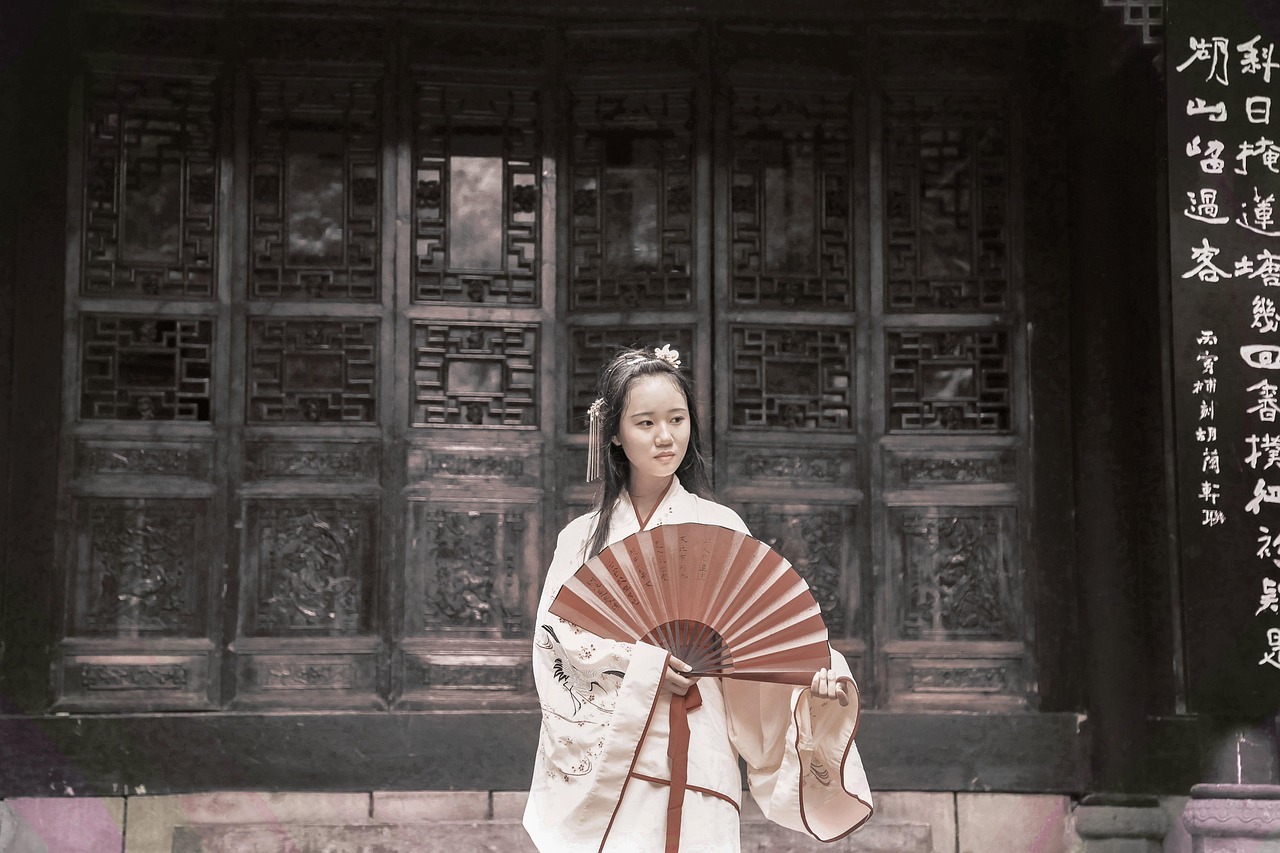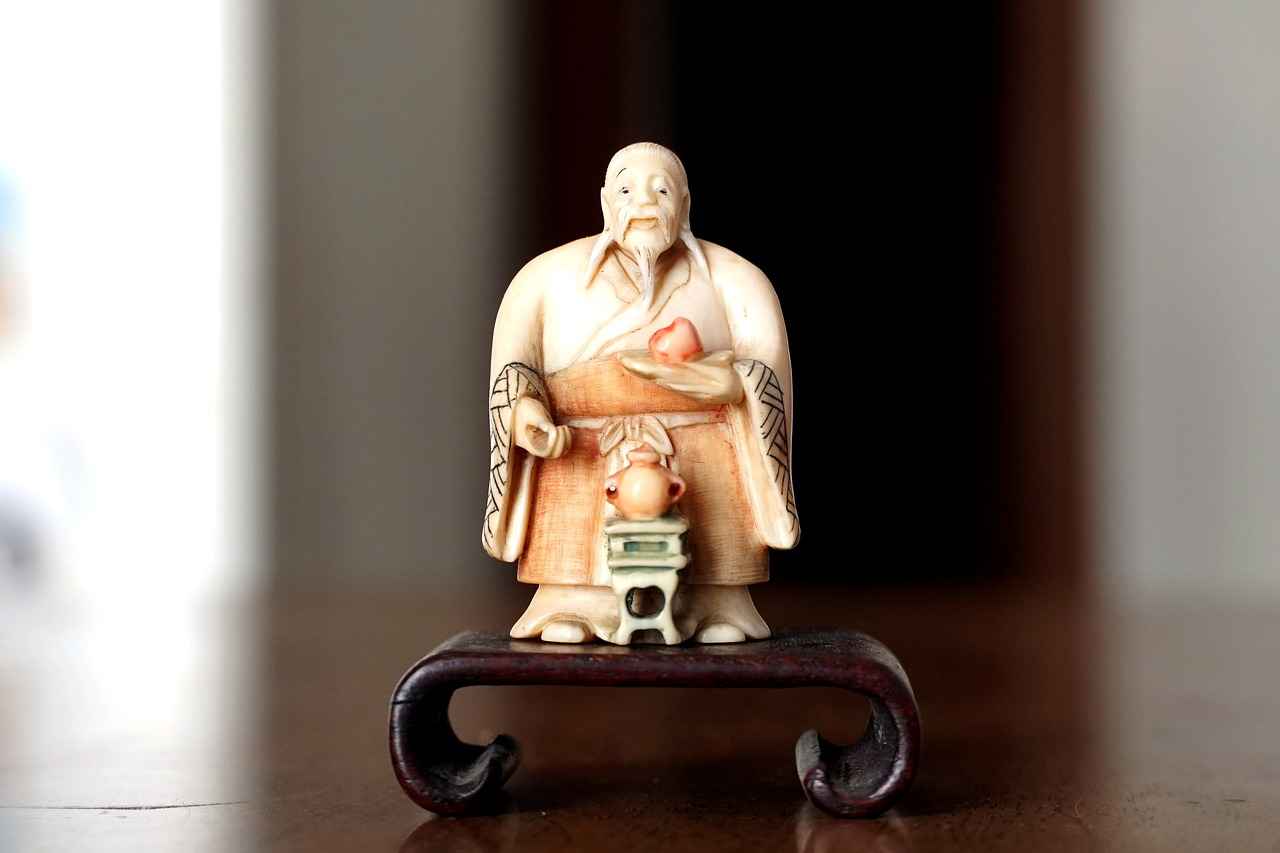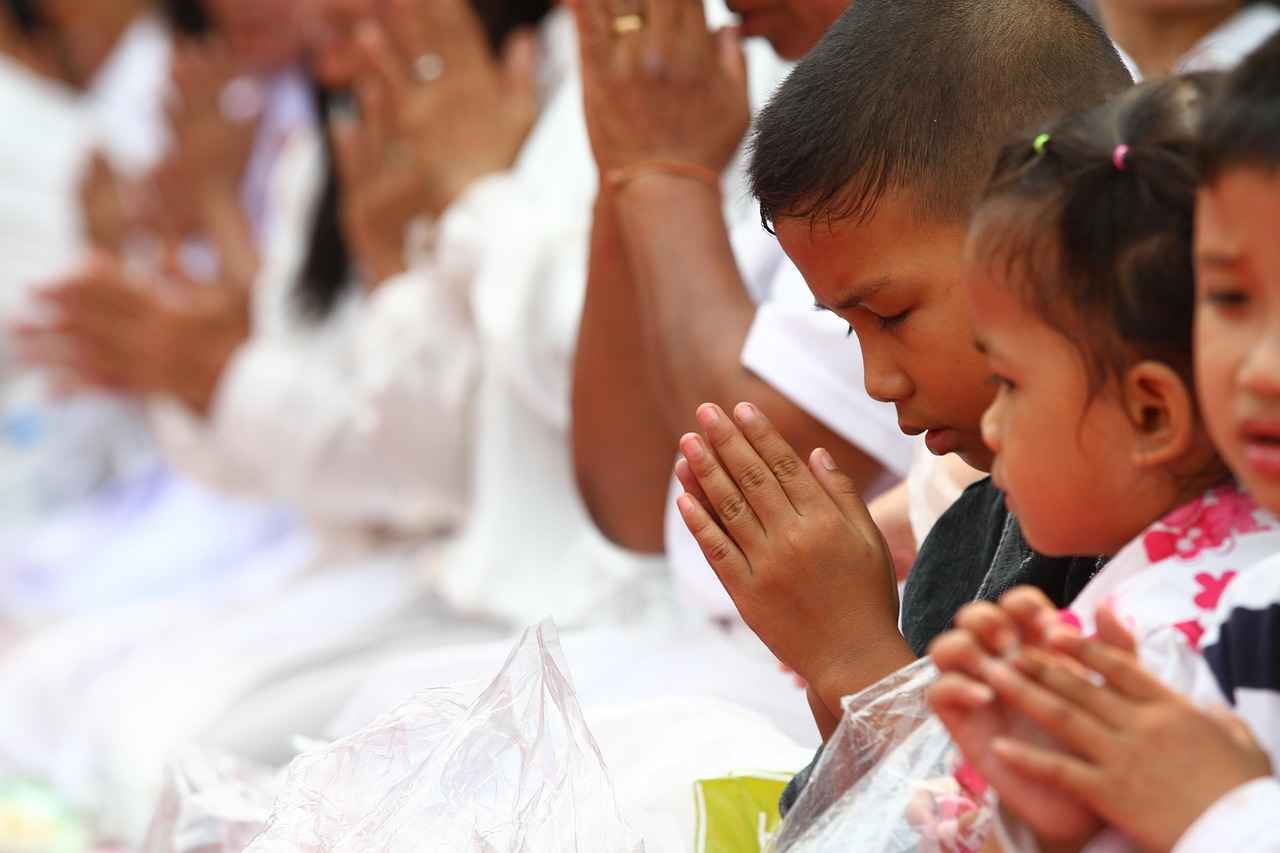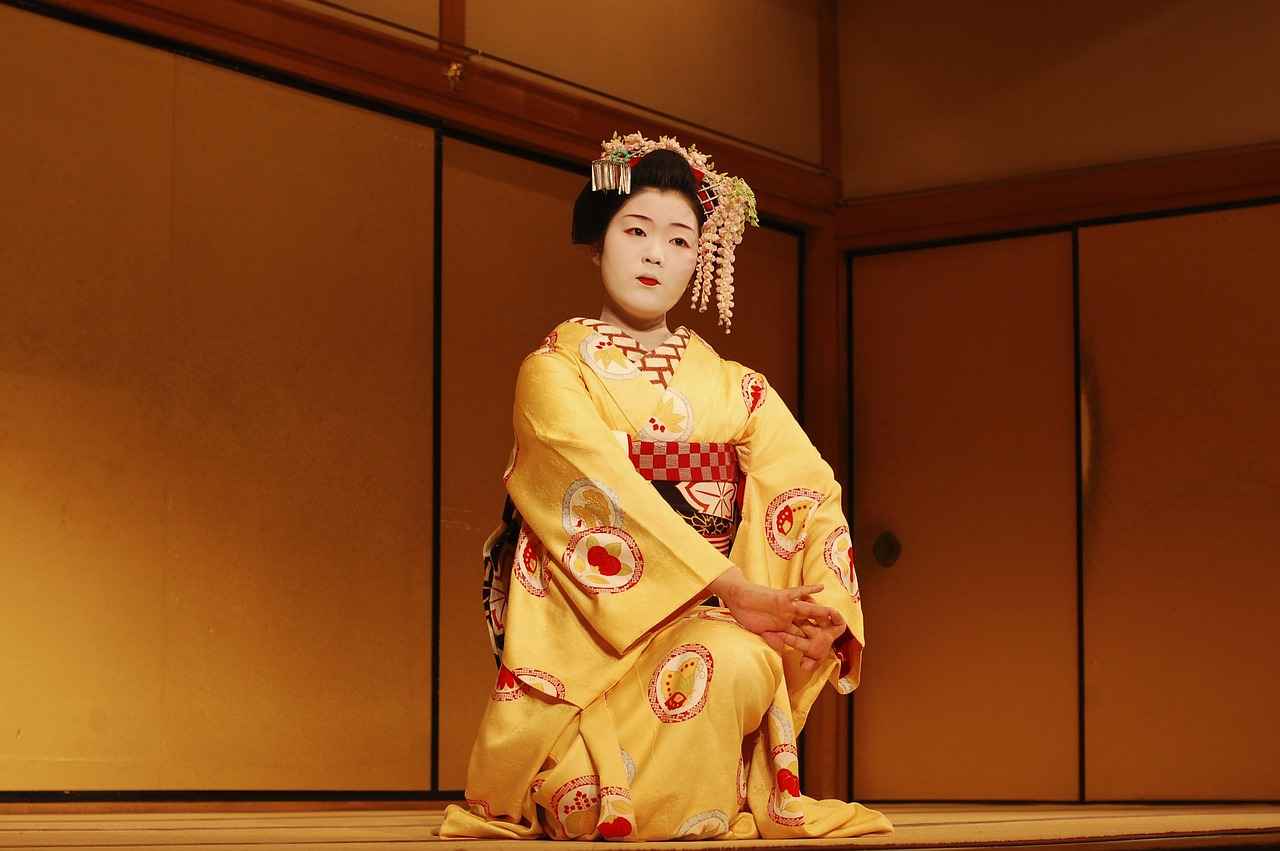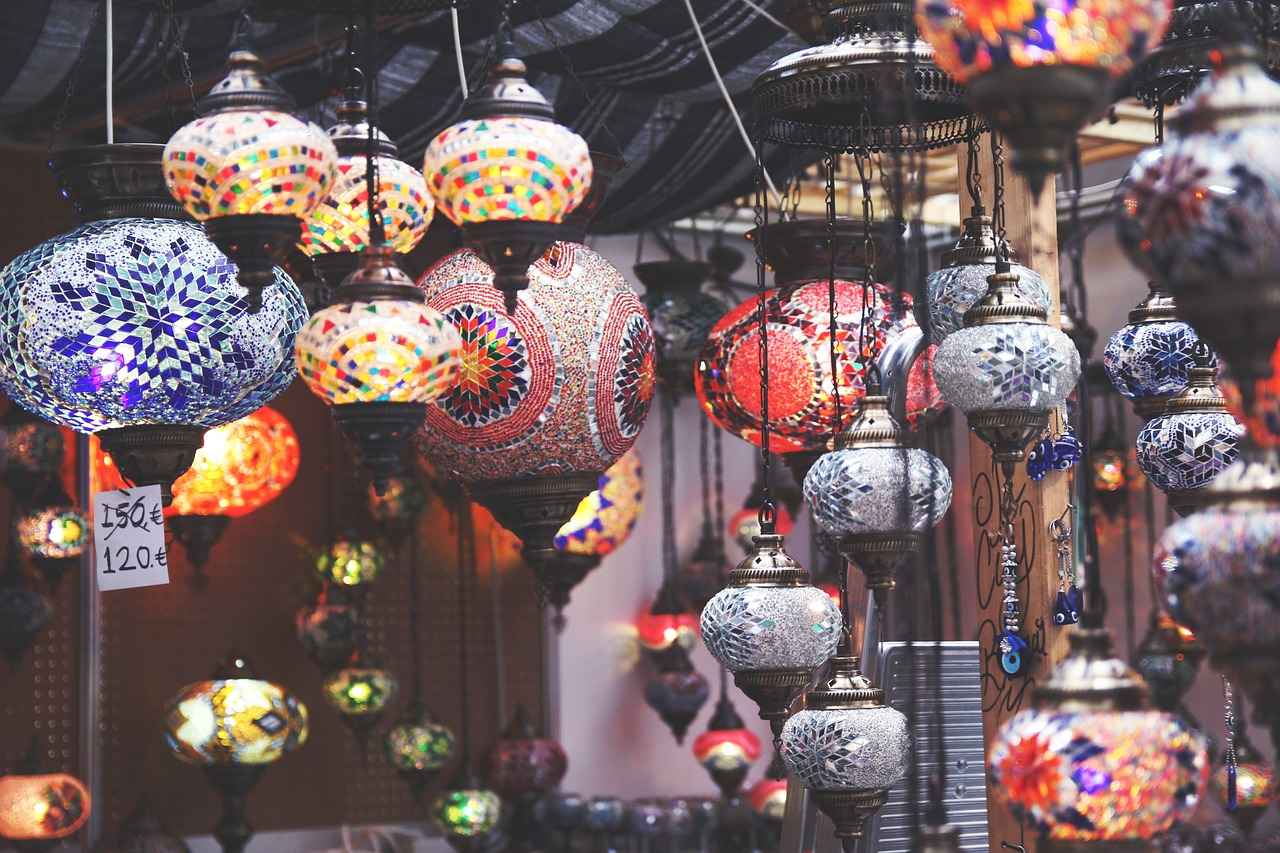Japan’s kimono weddings are not just ceremonies; they are a celebration of culture and history. This article explores the intricate traditions surrounding these weddings, the significance of the kimono, and how these practices have evolved over time. By delving into the rich tapestry of kimono wedding customs, we gain a deeper appreciation for this beautiful ceremony.
The History of Kimono in Weddings
The kimono has a storied history in Japan, tracing back to the Heian period (794-1185). Initially, kimonos were worn by both genders and were a symbol of social status. Over the centuries, as styles and fabrics evolved, the kimono became an integral part of Japanese weddings, symbolizing tradition and purity.
Types of Kimonos for Weddings
Weddings in Japan feature various types of kimonos, each with unique meanings. The shiromuku, a traditional white kimono, symbolizes purity and is often worn during the ceremony. In contrast, colored kimonos, adorned with vibrant patterns, are also popular among modern brides, reflecting their personal style and preferences.
Accessories That Complement the Kimono
- Obi: The obi is a wide belt that holds the kimono together, often intricately designed to enhance the overall look.
- Kanzashi: These decorative hairpins add an elegant touch and are often crafted with flowers or seasonal motifs.
Wedding Ceremony Rituals Involving Kimonos
During the wedding ceremony, rituals such as san-san-kudo, where the couple takes three sips of sake, symbolize the union of their families. The couple’s kimonos play a crucial role in these rituals, representing their commitment to each other and their cultural heritage.
Modern Adaptations of Kimono Traditions
Today, many couples blend traditional elements with modern influences. This can include choosing colorful kimonos or incorporating Western-style elements into the ceremony, showcasing the adaptability of this rich tradition.
Conclusion: The Enduring Legacy of Kimono Weddings
Kimono weddings are a beautiful fusion of tradition and modernity. They symbolize love, commitment, and the rich cultural heritage of Japan. As these practices continue to evolve, they remain a testament to the enduring legacy of kimono weddings in contemporary society.

The History of Kimono in Weddings
Understanding the historical context of kimonos in Japanese weddings reveals their significance and evolution. The kimono, a traditional Japanese garment, has been an integral part of wedding ceremonies for centuries, representing not just fashion, but also cultural identity and values.
The origins of the kimono can be traced back to the Heian period (794-1185), where it was primarily worn by the aristocracy. Over the years, the kimono evolved in style and significance, adapting to the changing social landscape. During the Edo period (1603-1868), the kimono became more accessible to the general populace, and its intricate designs began to symbolize various aspects of life, including marriage.
In weddings, the kimono is more than just attire; it embodies the traditions and values of Japanese culture. The shiromuku, a traditional white kimono, symbolizes purity and new beginnings. It is often worn by brides during the ceremony, showcasing the importance of these values in the union of two individuals. The color white, representing a clean slate, is favored for its association with fresh starts and hope for the future.
As time progressed, the kimono’s role in weddings has transformed. Today, brides may choose to wear a variety of kimonos, including colorful options that reflect personal style and modern trends. This evolution signifies a blend of traditional and contemporary influences, allowing for individual expression while still honoring cultural heritage.
Overall, the history of kimonos in weddings is a testament to their enduring significance. They not only represent the beauty of Japanese craftsmanship but also serve as a bridge connecting past traditions with the present. Understanding this historical context enriches the appreciation of kimonos as a vital element of Japanese wedding ceremonies.

Types of Kimonos for Weddings
In Japan, weddings are steeped in tradition, and the kimono plays a central role in these ceremonies. Each type of kimono carries its own significance, reflecting the cultural heritage and personal style of the couple. This section will delve into the various styles of kimonos worn during weddings, highlighting their unique meanings and the occasions for which they are suited.
- Shiromuku: The shiromuku is a traditional white kimono that symbolizes purity and new beginnings. It is typically worn by brides during the ceremony, representing their commitment to a fresh start in their married life.
- Colored Kimonos: In contrast to the shiromuku, colored kimonos have gained popularity among modern brides. These vibrant garments allow for personal expression and often feature elaborate designs that reflect the bride’s personality.
- Uchikake: This is a luxurious, decorated outer kimono that is worn over the shiromuku. The uchikake is often adorned with intricate patterns and colors, making it a stunning choice for wedding ceremonies.
- Furisode: Typically worn by unmarried women, the furisode is characterized by its long sleeves and vibrant colors. While it is not common for brides, it can be worn during pre-wedding ceremonies or celebrations.
The choice of kimono often depends on the ceremony type and the couple’s preferences. For instance, the shiromuku is generally favored for Shinto weddings, while colored kimonos may be selected for more modern ceremonies or receptions. Each kimono not only enhances the beauty of the bride but also connects her to centuries of tradition.
In conclusion, the variety of kimonos available for weddings showcases the rich tapestry of Japanese culture. Whether it is the timeless elegance of the shiromuku or the vibrant flair of a colored kimono, each style tells a story of love, commitment, and cultural heritage.
The Shiromuku Kimono
is a quintessential element of traditional Japanese weddings, embodying deep cultural significance and rich symbolism. This elegant white kimono is often worn by brides during their wedding ceremonies, representing purity and a new beginning. Its design and the occasions it is worn during play a crucial role in the overall wedding experience.
The shiromuku is characterized by its stunning simplicity and intricate craftsmanship. Traditionally, it is made from silk and features a plain white fabric, which signifies the bride’s purity and her readiness to start a new life with her partner. The choice of white also reflects the idea of a blank slate, symbolizing the couple’s fresh start together.
In terms of design elements, the shiromuku often includes subtle yet beautiful patterns that may incorporate seasonal motifs or traditional symbols. These designs are not just for aesthetics; they also carry meanings that connect the bride to her cultural heritage. The craftsmanship involved in creating a shiromuku is remarkable, as it requires skilled artisans to weave and dye the fabric, ensuring that each kimono is unique.
The shiromuku is typically worn during the main wedding ceremony, where it is complemented by various accessories that enhance its beauty. This garment is often paired with a hachimaki (headpiece) and an obi (sash), which are essential elements of the bridal attire. The combination of these elements creates a striking visual that honors tradition while celebrating the bride’s individuality.
In conclusion, the shiromuku kimono is not just a garment; it is a powerful symbol of purity and cultural identity in Japanese weddings. Its elegance and significance make it an enduring choice for brides, representing the beauty of tradition in modern ceremonies.
Symbolism of White in Weddings
In Japanese culture, the color white holds profound significance, symbolizing purity and new beginnings. This cultural reverence for white is particularly evident in wedding ceremonies, where it plays a crucial role in the attire of the bride and groom. The traditional kimono, especially the shiromuku, is predominantly white, representing the bride’s commitment to starting a new life with her partner, free from past burdens.
Wearing white during weddings is not merely a fashion choice; it is deeply rooted in the belief that this color embodies the essence of innocence and fresh starts. It is a visual representation of the couple’s hopes for a harmonious and prosperous future together. The choice of white attire signifies a clean slate, allowing the couple to embark on their marital journey unencumbered by previous experiences.
Moreover, the symbolism of white extends beyond just the attire. It permeates various aspects of the wedding ceremony, including the decorations and rituals. For instance, the use of white flowers and table settings enhances the overall ambiance, reinforcing the theme of purity and new beginnings.
In contrast to the vibrant colors that may be seen in other cultures’ wedding traditions, the simplicity of white in Japanese weddings reflects a deep respect for tradition and the importance of the moment. This choice encourages the couple to focus on the significance of their union rather than on extravagant displays.
Ultimately, the preference for white attire in Japanese weddings is a beautiful expression of cultural values, emphasizing purity, renewal, and the promise of a bright future together. As couples don their white kimonos, they not only honor their heritage but also embrace the journey ahead, filled with love and shared dreams.
Design Features of Shiromuku
The shiromuku kimono, a traditional garment worn by brides during Japanese weddings, is not only a symbol of purity but also a masterpiece of craftsmanship. This exquisite attire showcases intricate designs and patterns that reflect the profound cultural heritage of Japan. The artistry involved in creating a shiromuku is a testament to the skills passed down through generations, making it a unique representation of Japanese identity.
One of the most striking features of the shiromuku is its white color, which symbolizes purity and a fresh start for the bride. However, it is the design elements that truly set this kimono apart. The patterns often include traditional motifs such as cherry blossoms, cranes, and waves, each carrying significant meanings. For instance, cranes represent longevity and fidelity, while cherry blossoms symbolize the beauty of life and the transient nature of existence.
Moreover, the craftsmanship involved in making the shiromuku is meticulous. Skilled artisans employ techniques such as yuzen dyeing and embroidery to create these stunning designs. Yuzen dyeing allows for vibrant colors and intricate patterns to be applied to the fabric, while embroidery adds a tactile quality that enhances the overall aesthetic. This attention to detail ensures that each kimono is not just a garment but a work of art, often taking months to complete.
Furthermore, the shiromuku is typically worn during the Shinto wedding ceremony, where its elegance and simplicity stand out. The combination of the kimono’s design and the bride’s poise creates a breathtaking visual that embodies the essence of Japanese culture.
In conclusion, the design features of the shiromuku kimono are a reflection of Japan’s rich cultural heritage. The intricate patterns, skilled craftsmanship, and deep symbolism make it a significant garment in the context of Japanese weddings, celebrating both tradition and artistry.
Colored Kimonos: A Modern Twist
Colored kimonos have become a stunning trend in modern weddings, showcasing a vibrant departure from traditional styles. As brides seek to express their individuality and personal style, these colorful garments have gained significant popularity, allowing for a unique blend of tradition and contemporary flair.
The evolution of the kimono in wedding attire reflects broader cultural shifts, where modern brides are increasingly opting for bold colors and intricate patterns. This shift not only signifies personal choice but also a celebration of cultural heritage. In contrast to the classic white shiromuku, colored kimonos offer a canvas for self-expression, often featuring floral motifs, geometric designs, and even seasonal themes.
Brides today are embracing the versatility of colored kimonos, incorporating them into various aspects of their wedding ceremonies. For instance, some choose to wear a vibrant kimono during the reception, pairing it with a traditional white kimono for the ceremony itself. This combination allows for a seamless transition between the solemnity of the vows and the celebratory spirit of the reception.
Moreover, the choice of color holds significant meaning. Each hue can symbolize different qualities; for example, red represents happiness and good fortune, while blue can signify peace and calmness. This thoughtful selection allows brides to convey their aspirations and emotions through their attire.
Accessories play a crucial role in enhancing the overall look of colored kimonos. Items such as obi (sashes) and kanzashi (hair ornaments) can be chosen to complement the vibrant colors, further personalizing the bridal ensemble. The interplay of colors and patterns creates a striking visual impact, making the bride stand out on her special day.
In conclusion, the rise of colored kimonos in weddings exemplifies a beautiful fusion of tradition and modernity. As brides continue to explore and embrace their unique styles, colored kimonos serve as a powerful symbol of personal expression and cultural appreciation in contemporary wedding ceremonies.

Accessories That Complement the Kimono
Accessories play a crucial role in enhancing the beauty and elegance of a kimono during weddings. These traditional items not only serve functional purposes but also symbolize various aspects of Japanese culture and aesthetics. In this section, we will explore some key accessories, including the obi, obijime, and kanzashi, that complete the kimono look for brides on their special day.
| Accessory | Description | Significance |
|---|---|---|
| Obi | A wide belt that wraps around the waist of the kimono. | Symbolizes the strength and unity of the couple. |
| Obijime | A decorative cord that secures the obi in place. | Adds an elegant touch and can represent family heritage. |
| Kanzashi | Hair ornaments used to adorn the bride’s hairstyle. | Signifies beauty and is often chosen to match the kimono’s colors. |
The obi is perhaps the most significant accessory in kimono fashion. It comes in various styles and designs, each conveying different meanings. For instance, a fukuro obi is often worn for formal occasions, while a haneri obi may be used for less formal events. The way the obi is tied can also convey messages about the wearer’s personality and status.
Obijime, the decorative cord that secures the obi, adds an extra layer of charm to the outfit. Typically made from silk, obijime comes in various colors and patterns, allowing the bride to express her individuality while complementing her kimono.
Finally, kanzashi are exquisite hair ornaments that elevate the bridal look. These hairpins can feature intricate designs, often incorporating flowers, birds, or seasonal motifs, symbolizing beauty and the natural world. The choice of kanzashi can reflect the bride’s personality and the season of the wedding.
In conclusion, the accessories that accompany a kimono are not mere embellishments; they play a vital role in completing the bridal look while embodying rich cultural meanings. Each piece, from the obi to the kanzashi, contributes to the overall aesthetic and significance of the wedding attire.
The Role of Obi in Kimono Fashion
The obi serves as a vital accessory in the traditional kimono attire, particularly during weddings. This wide belt not only secures the kimono in place but also adds an element of elegance and style. The obi comes in various styles, each with its unique significance and aesthetic appeal, making it an essential component of a bride’s ensemble.
There are several types of obi, including:
- Fukuro-obi: This is a formal type of obi that is often worn by brides. It features beautiful designs and is typically wider than other obi types.
- Haneri-obi: A more casual option, the haneri-obi is often used for less formal occasions. It is narrower and can be adorned with various patterns.
- Maru-obi: Known for its intricate and elaborate designs, the maru-obi is often reserved for the most formal events, including weddings.
In traditional Japanese weddings, the obi is not merely a fashion statement; it symbolizes the union of two families. The way the obi is tied can also convey various meanings. For instance, a knot tied in a specific manner may signify the bride’s commitment to her new family.
Moreover, the choice of obi color and design can reflect the couple’s personality and aspirations. For instance, vibrant colors may symbolize joy and celebration, while softer hues may represent tranquility and harmony. This personalization allows brides to express their individuality while honoring cultural traditions.
In conclusion, the obi is more than just an accessory; it is a significant element that enhances the overall beauty of the kimono. Its various styles and meanings contribute to the rich tapestry of Japanese wedding traditions, making it a crucial part of the ceremonial attire.
Kanzashi: The Art of Hair Accessories
Kanzashi are not merely hairpins; they are exquisite pieces of art that hold deep cultural significance in Japanese weddings. These ornamental accessories have been used for centuries, enhancing the beauty of traditional kimonos and symbolizing various aspects of Japanese heritage.
The types of kanzashi vary widely, each with its unique design and meaning. Common styles include:
- Hanagami: Floral-themed kanzashi, representing nature and beauty.
- Hana Kanzashi: A type of kanzashi that features intricate flower designs, often made from silk or other materials.
- Tsumami Kanzashi: Crafted from folded fabric, these kanzashi showcase a delicate artistry that is both traditional and modern.
In Japanese weddings, kanzashi serve not only as decorative elements but also as symbols of good fortune and harmony. For instance, the use of specific flowers can convey wishes for prosperity and happiness in the couple’s new life together. The choice of kanzashi often reflects the season and the couple’s personal preferences, making each piece unique.
Wearing kanzashi is a rite of passage for many brides, marking their transition into married life. The elaborate designs and vibrant colors of these hairpins complement the kimono, creating a harmonious and visually stunning bridal look. Additionally, the craftsmanship involved in making kanzashi is a testament to the skill and dedication of artisans, preserving traditional techniques that have been passed down through generations.
As we explore the world of kanzashi, we uncover not just a beautiful accessory but a rich tapestry of cultural significance that enhances the overall experience of Japanese weddings. The art of kanzashi continues to evolve, merging traditional aesthetics with modern sensibilities, ensuring that these cherished hairpins remain an integral part of bridal attire for years to come.

Wedding Ceremony Rituals Involving Kimonos
The wedding ceremony in Japan is a breathtaking event, steeped in tradition and rich with rituals that prominently feature the kimono. This section explores the key traditions that take place during the ceremony, including the san-san-kudo and the exchange of vows, illuminating their profound meanings.
One of the most significant rituals is the san-san-kudo, which translates to “three, three, nine times.” This ceremony involves the couple taking three sips of sake from three different cups, symbolizing their union and the joining of their families. Each sip represents a vow: to honor and cherish one another, to support each other, and to create a harmonious family. This ritual emphasizes the importance of family ties and mutual respect, core values in Japanese culture.
During the wedding, the couple wears exquisite kimonos that embody their heritage and personal stories. The choice of kimono is not merely aesthetic; it reflects the couple’s commitment to honoring tradition while embracing their unique identities. The exchange of vows is another pivotal moment where the couple articulates their promises to one another, often while dressed in their beautiful kimonos. This moment is deeply symbolic, as the attire signifies purity, beauty, and the beginning of a new chapter in their lives.
Furthermore, the couple’s kimonos may feature specific motifs that represent good fortune and happiness, reinforcing the blessings they seek in their marriage. The intricate designs and colors of the kimonos add a layer of meaning, making each wedding uniquely personal.
In conclusion, the rituals involving kimonos during Japanese wedding ceremonies are not just formalities; they are profound expressions of love, commitment, and cultural heritage. Each tradition, from the san-san-kudo to the heartfelt exchange of vows, encapsulates the essence of a union that is both personal and communal.
San-San-Kudo: A Symbolic Toast
San-san-kudo is a deeply significant ritual in traditional Japanese weddings, representing the union of two individuals as well as the merging of their families. This practice involves the couple taking three sips of sake from three separate cups, which is a symbolic gesture rich in meaning.
The name san-san-kudo translates to “three, three, nine,” where the number three is repeated and culminates in nine, a number considered auspicious in Japanese culture. The act of taking three sips signifies the couple’s commitment to one another, as well as their promise to honor and respect each other’s families. Each sip represents a different aspect of their relationship:
- First Sip: Represents the couple’s vows to each other.
- Second Sip: Symbolizes their commitment to their families.
- Third Sip: Signifies the bond between the two families coming together.
The ritual is often performed during the shinto ceremony, which is one of the most traditional forms of Japanese weddings. As the couple participates in san-san-kudo, they are not only celebrating their love but also acknowledging the support and unity of their families. This act deepens the emotional connection and strengthens familial ties, making it a pivotal moment in the wedding ceremony.
Moreover, the sake used in this ritual is typically poured from a ceremonial vessel, which adds to the significance of the moment. The couple may also share a toast with their guests following the ritual, further extending the spirit of unity and celebration.
In conclusion, san-san-kudo is much more than a mere toast; it is a profound expression of love, respect, and familial harmony. This ritual beautifully encapsulates the essence of Japanese wedding traditions, emphasizing the importance of community and shared values in the journey of marriage.
Exchanging Vows in Traditional Kimonos
The exchange of vows is a pivotal moment in any wedding ceremony, symbolizing the couple’s commitment to one another. In traditional Japanese weddings, this moment is particularly significant, as it is often accompanied by the couple wearing exquisite kimonos that reflect their cultural heritage and personal values.
During the ceremony, the couple typically dons a shiromuku, a white kimono worn by brides that symbolizes purity and new beginnings. The groom may wear a montsuki, a formal black kimono adorned with family crests. The choice of these garments is not merely for aesthetics; they carry deep cultural meanings that resonate with the couple’s journey together.
| Kimono Type | Symbolism |
|---|---|
| Shiromuku | Purity and new beginnings |
| Colored Kimonos | Personal expression and joy |
The couple’s attire during the vow exchange serves as a visual representation of their commitment and shared cultural heritage. The intricate designs and patterns found on their kimonos often tell stories of their families and the traditions they are upholding. For instance, the bride’s kimono may feature floral motifs that symbolize fertility and prosperity, while the groom’s attire may showcase symbols of strength and protection.
Moreover, the act of exchanging vows while adorned in these traditional garments enhances the emotional weight of the moment. It connects the couple to their ancestors and the rich history of Japanese weddings. The ceremony becomes not just a personal commitment but a celebration of cultural identity, making it a profound experience for both the couple and their families.
In conclusion, the exchange of vows in traditional kimonos is more than a formality; it is a beautiful expression of love, culture, and shared values. The garments worn during this moment are steeped in significance, making the ceremony a memorable and meaningful occasion for all involved.

Modern Adaptations of Kimono Traditions
In today’s world, weddings are increasingly becoming a canvas for personal expression, especially in cultures with rich traditions like Japan. Modern couples are finding innovative ways to blend traditional kimono elements with contemporary styles, creating a unique celebration that reflects their individuality while honoring their cultural heritage.
One of the most significant adaptations is the incorporation of vibrant colors and unique patterns into the traditional kimono. While the classic shiromuku (white kimono) symbolizes purity, many brides are opting for colored kimonos that showcase their personal tastes. This shift not only adds a modern twist but also allows couples to express their personalities through their attire.
- Personalized Designs: Some couples are commissioning custom kimonos that feature elements meaningful to them, such as motifs representing their love story or family heritage.
- Mixing Styles: Many brides choose to pair traditional kimonos with modern accessories like contemporary jewelry and stylish shoes, creating a fusion of old and new.
- Alternative Fabrics: While silk remains a popular choice, some are experimenting with different fabrics that offer comfort and a modern feel without sacrificing the traditional aesthetic.
Moreover, the ceremony itself is evolving. Couples are incorporating modern elements into traditional rituals, such as the san-san-kudo sake ceremony, where they might choose to use personalized sake cups that reflect their style. This blend of tradition and modernity not only enriches the ceremony but also allows couples to create lasting memories that resonate with their journey together.
In conclusion, the adaptation of kimono traditions in contemporary weddings is a beautiful testament to the evolving nature of cultural practices. By embracing both tradition and modernity, couples are crafting weddings that are not only visually stunning but also deeply personal.

Conclusion: The Enduring Legacy of Kimono Weddings
Kimono weddings represent a unique intersection of tradition and modernity, deeply rooted in Japanese culture. These ceremonies not only celebrate the union of two individuals but also honor centuries of cultural heritage. The kimono, a symbol of elegance and grace, plays a pivotal role in these weddings, showcasing the beauty of Japanese craftsmanship and the significance of cultural rituals.
As we explore the enduring legacy of kimono weddings, it is essential to recognize how these traditions have evolved over time. While the core elements remain intact, modern couples are increasingly blending traditional practices with contemporary styles. This fusion reflects a broader trend in society where cultural heritage is honored while allowing for personal expression.
One of the most striking aspects of kimono weddings is the shiromuku, a traditional white kimono symbolizing purity. This garment is often worn by brides during the ceremony, signifying a fresh start and the couple’s commitment to each other. The intricate designs and rich symbolism embedded in the kimono tell a story that transcends generations, connecting the past with the present.
In addition to the shiromuku, many brides choose to wear colored kimonos, which have gained popularity in recent years. These vibrant garments allow for personalization, enabling brides to express their unique identities while still honoring traditional elements. This modern twist on kimono weddings illustrates how cultural practices can adapt to contemporary tastes without losing their essence.
The rituals performed during a kimono wedding, such as san-san-kudo, further emphasize the importance of family and community in Japanese culture. These ceremonies not only unite the couple but also strengthen the bonds between their families, showcasing the collective support that underpins their marriage.
In conclusion, the legacy of kimono weddings is a testament to the enduring power of tradition in a rapidly changing world. As couples continue to embrace and adapt these practices, they ensure that the rich cultural heritage of kimono weddings remains alive and relevant. This beautiful fusion of the old and the new symbolizes love, commitment, and the hope for a bright future.
Frequently Asked Questions
- What is the significance of the shiromuku kimono in Japanese weddings?
The shiromuku kimono, traditionally white, symbolizes purity and new beginnings. It is often worn by brides during the ceremony, representing their commitment to a fresh start in their married life.
- Are there different types of kimonos for weddings?
Yes! There are several types of kimonos, including the shiromuku and colorful kimonos. Each type has its own unique meanings and styles, allowing brides to choose one that reflects their personality and the significance of the occasion.
- What role do accessories like obi and kanzashi play in kimono weddings?
Accessories are essential in enhancing the overall look of a kimono. The obi, a wide belt, is crucial for securing the kimono, while kanzashi, ornamental hairpins, add a beautiful touch to the bridal hairstyle, making the entire ensemble more elegant.
- What is the san-san-kudo ritual?
San-san-kudo is a traditional wedding ritual where the couple takes three sips of sake from three different cups. This act symbolizes the bonding of the couple and their families, emphasizing unity and harmony.
- How are modern weddings adapting kimono traditions?
Modern weddings often blend traditional kimono elements with contemporary styles. Couples may choose vibrant colors, unique patterns, or even mix Western attire with kimonos, allowing them to express their individuality while honoring their cultural heritage.
